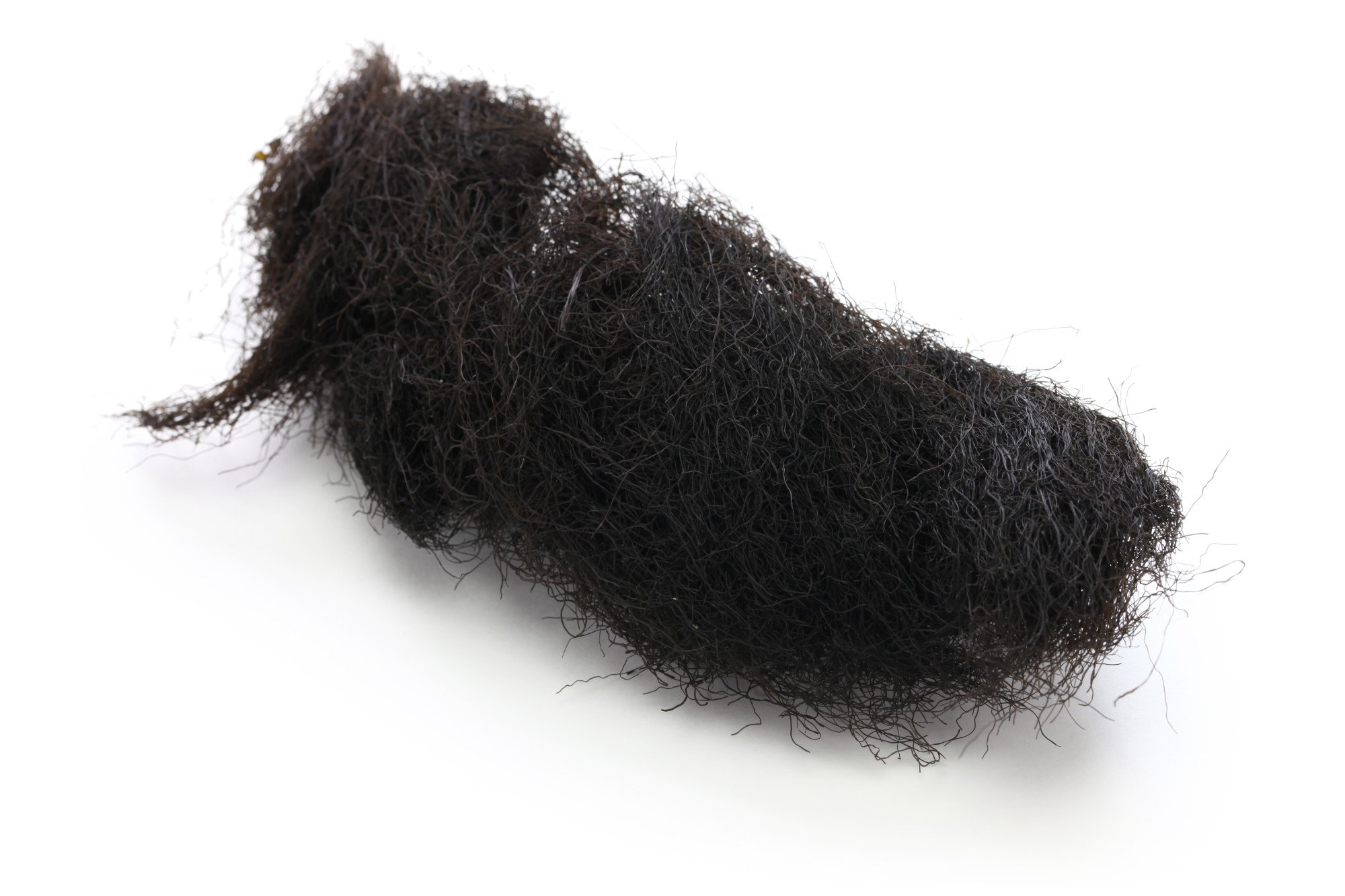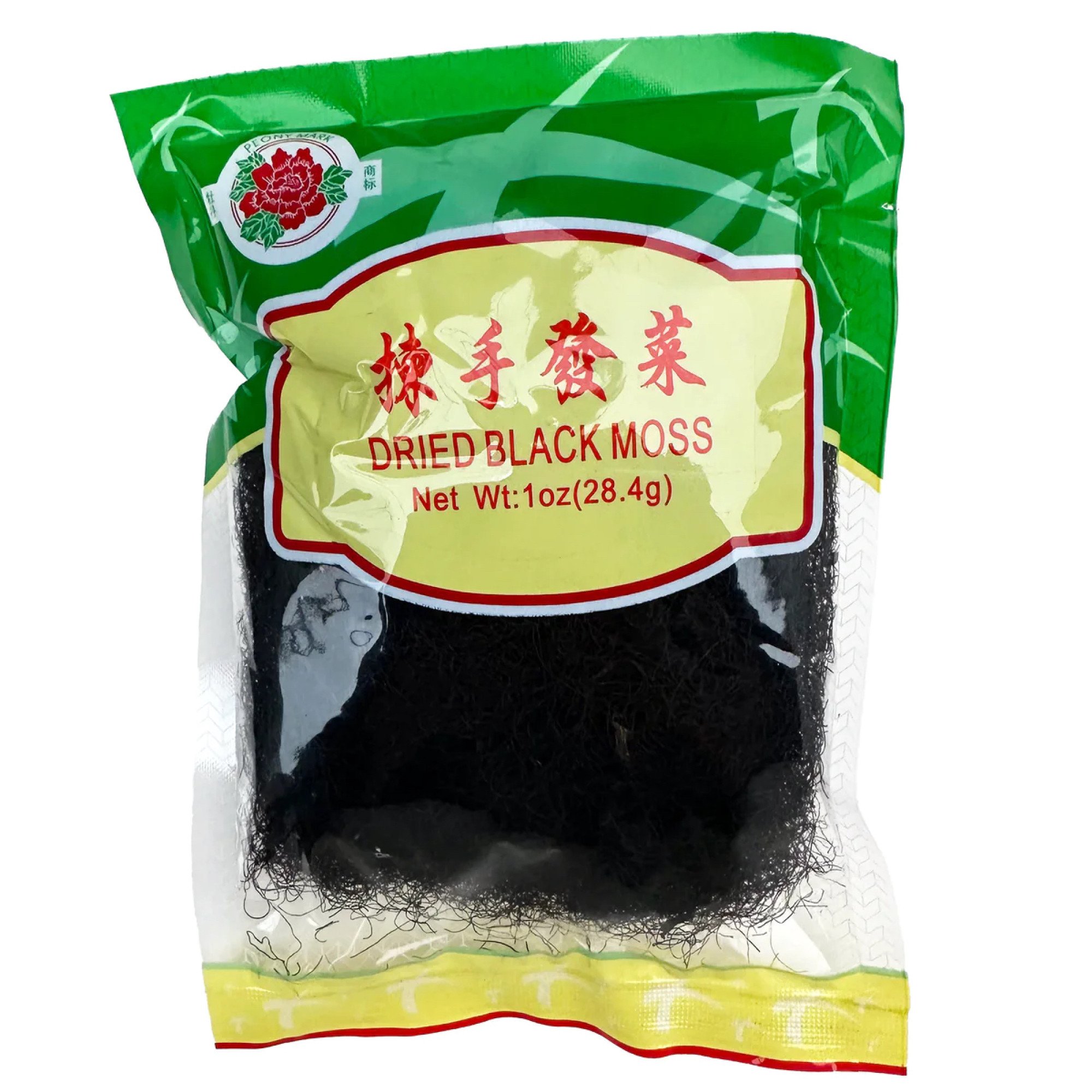
Fat choy: the lucky sounding Chinese New Year food whose harvesting has turned fragile landscapes in China into desert
- Black moss is synonymous with Chinese New Year feasts because of its lucky sounding name in Cantonese, fat choy, a homonym for ‘get rich’
- However, there is nothing lucky about it any more in the dry areas of China where it mostly grows – overharvesting of the moss has turned the land into desert
Among the foods typically associated with Chinese New Year are whole fish or chicken, plump prawns, sticky-rice cakes, turnip cake – and, perhaps the least attractive of them all, clumps of braised hair moss, usually nestled on a plate of cooked lettuce and dried oysters.
As a child, I’d pick at the inky, melting strands and declare cheekily to my relatives that I was eating “hair”. Many of them would even join the charade, encouraging me to pick up more.
“It’s good for your tresses,” they would say, nodding. Eat more and your hair will grow thick, black and healthy.
Like many other fables told at the table, such advice is not particularly scientific. There is no research that shows the consumption of hair moss has anything to do with fabulous follicles.

The obvious reason for hair moss being a Chinese New Year mainstay is more superstitious than practical.
In Cantonese, the ingredient is known as fat choy (literally “hair vegetable”), which is, more importantly, a homonym for “get rich”. So a more likely explanation for piling heaps of it into one’s rice bowl has to do with the desire for wealth rather than an enviable mane.
So what is fat choy? It may be vegetable-like, but despite its name it is not a vegetable at all.
While commonly known by alternative names such as black moss, hair moss or hair weed, its scientific name is the rather unwieldy Nostoc flagelliforme and it is categorised as a terrestrial cyanobacterium.
Yes, this auspicious ingredient is essentially a type of bacteria; ergo your fat choy dish is a veritable Petri dish of prosperity!
It’s ironic, considering that Nostoc commune – the scientific name for a colonial species of cyanobacterium that includes fat choy – was consumed as a famine food during the Eastern Jin dynasty in China, in the 4th century AD.

Fat choy also has its own superhero origin story, as told through the legend of renowned Chinese messenger-turned-shepherd Su Wu, who was exiled to a desolate land (Lake Baikal, now in Russia) for 19 years by Xiongnu nomads and left to starve.
The hardy Su Wu survived by eating the felt from his clothes (or grass from a rodent’s nest, depending on which version you’re reading) and drinking melted snow.
In all tellings, despite his hardships, the loyal Su Wu proudly held onto his noble imperial staff, using it as a shepherd’s rod until all of its decorative hairs fell off. He then cut off his own locks and tied them to the pole to ensure it looked complete.
Eventually, the wind and sand blew the hair off the staff and onto the ground, where it took root and grew into clumps of long strands resembling hair.

Su Wu discovered that these magical plants were able to sate his hunger, and so the legend of fat choy was born and he returned to Changan a hero.
It’s no wonder fat choy became so ingrained in the imagination of many a generation, transcending its unsettling appearance.
Sold dried, fat choy requires a brief soak to reconstitute it before being cooked, typically in braised dishes and usually with dried oysters (the two ingredients combine to form the couplet “get rich, good business”) and in festive foods such as poon choi (aka village basin meal), which features various ingredients arranged in layers.
Frequently asked questions: how long is Lunar New Year?
Fat choy is mostly found growing on the ground in dry areas of China such as Inner Mongolia, Ningxia, Qinghai and Xinjiang, but overharvesting has led to desertification, deforestation and accelerated erosion in these areas.
It’s a highly covetable ingredient, but “the harvesting of facai (hair moss) has turned millions of hectares of grasslands in China into desert”, according to an article by the global conservation body WWF on foods to avoid during Chinese New Year. “About 1.6 hectares (3.95 acres) of grassland are damaged for each 450g (1lb) of moss collected.”
This has had knock-on effects, such as increased sandstorms afflicting even distant cities such as Beijing and Shanghai. In 2000, the Chinese central government implemented a ban on the collection, sale and export of hair moss.
The resulting scarcity of existing fat choy stocks has also driven up the price, which now stands at around US$125 per kilogram.
There is no more wild fat choy available now. If they say it’s wild, it’s most likely fake.
Despite environmental concerns, black moss is still relatively easy to buy online and it’s not hard to find it being served in restaurants.
In Hong Kong, local dried goods purveyor On Kee is selling two taels (75 grams) of “superior” black moss for HK$96 (US$12.25).

“Indeed, fat choy is becoming more rare. But when it comes to festive seasons, putting a little into a poon choi or another dish is still an important part of the tradition,” says chef Hong Chi-kin, of Jiangsu Club, in Sheung Wan, which sells a festive poon choi chock-full of premium fish maw, abalone, prawns and little portions of fat choy.
Hong clarifies that the fat choy he uses is cultivated and comes from Zhejiang and Fujian provinces. “There is no more wild fat choy available now,” he says. “If they say it’s wild, it’s most likely fake.”
Indian chef on her picture-perfect food art that’s taken Instagram by storm
Zoe Wong, sustainability officer for Cordis Hong Kong, in Mong Kok, says the hotel stopped using sea moss back in 2017.
“This alternative ingredient not only helps protect the ecological environment, but also allows us to maintain the desired culinary experience and uphold the auspicious symbolism of prosperity for our diners during the Lunar New Year festival,” explains Wong.
While it may not have the same ring as fat choy, think of it this way: what’s the use of all the world’s riches if the trade-off is the health of the planet?


